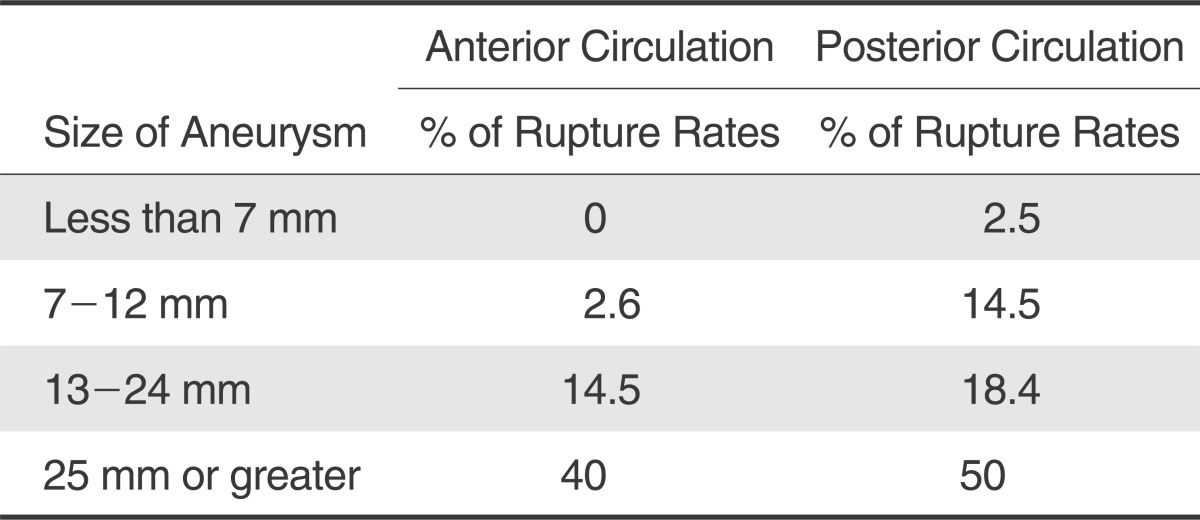1. Lee BH. Guideline for intracranial stenting of symptomatic intracranial artery stenosis: preliminary report. Neurointervention 2007;2:30-35.
2. Kim DJ. Guideline for intra-arterial thrombolysis of hyperacute ischemic stroke patient: preliminary report. Neurointervention 2007;2:17-23.
3. Roh HG. Perspectives on fellowship training standard in interventional neuroradiology. Neurointervention 2007;2:13-16.
4. Kim KH. Guideline for management of unruptured intracranial aneurysms: preliminary report. Neurointervention 2007;2:43-49.
5. Lee MS. Guideline for management of ruptured aneurysm: Preliminary report. Neurointervention 2007;2:36-42.
6. Suh SI. Guideline for extracranial carotid stenting: preliminary report. Neurointervention 2007;2:24-29.
7. Ryu CW, Hwang SK, Jung HD, Park YS, Park MH, Kim HJ. The present status of neurointerventional angiographic systems and workers in Korea. Neurointervention 2009;4:116-124.
9. Stroke CRCf Clinical practice guidelines for stroke, : Seoul, Korea, Clinical Research Center for Stroke; 2013.
10. Brott TG, Halperin JL, Abbara S, Bacharach JM, Barr JD, Bush RL, et al. 2011 ASA/ACCF/AHA/AANN/AANS/ACR/ASNR/CNS/SAIP/SCAI/SIR/SNIS/SVM/SVS guideline on the management of patients with extracranial carotid and vertebral artery disease: executive summary. A report of the American College of Cardiology Foundation/American Heart Association Task Force on Practice Guidelines, and the American Stroke Association, American Association of Neuroscience Nurses, American Association of Neurological Surgeons, American College of Radiology, American Society of Neuroradiology, Congress of Neurological Surgeons, Society of Atherosclerosis Imaging and Prevention, Society for Cardiovascular Angiography and Interventions, Society of Interventional Radiology, Society of NeuroInterventional Surgery, Society for Vascular Medicine, and Society for Vascular Surgery. Circulation 2011;124:489-532 .


12. European Stroke OrganisationESC Guidelines on the diagnosis and treatment of peripheral artery diseases: document covering atherosclerotic disease of extracranial carotid and vertebral, mesenteric, renal, upper and lower extremity arteries: the Task Force on the Diagnosis and Treatment of Peripheral Artery Diseases of the European Society of Cardiology (ESC). Eur Heart J 2011;32:2851-2906 .


13. Suh DC, Lee SH, Kim KR, Park ST, Lim SM, Kim SJ, et al. Pattern of atherosclerotic carotid stenosis in Korean patients with stroke: different involvement of intracranial versus extracranial vessels. AJNR Am J Neuroradiol 2003;24:239-244 .


14. Sacco RL, Kargman DE, Gu Q, Zamanillo MC. Race-ethnicity and determinants of intracranial atherosclerotic cerebral infarction. The Northern Manhattan Stroke Study. Stroke 1995;26:14-20 .


15. Wong LK. Global burden of intracranial atherosclerosis. Int J Stroke 2006;1:158-159 .


16. Chimowitz MI, Lynn MJ, Howlett-Smith H, Stern BJ, Hertzberg VS, Frankel MR, et al. Comparison of warfarin and aspirin for symptomatic intracranial arterial stenosis. N Engl J Med 2005;352:1305-1316 .


17. Hussain MS, Fraser JF, Abruzzo T, Blackham KA, Bulsara KR, Derdeyn CP, et al. Standard of practice: endovascular treatment of intracranial atherosclerosis. J Neurointerv Surg 2012;4:397-406 .


19. Lu PH, Park JW, Park S, Kim JL, Lee DH, Kwon SU, et al. Intracranial stenting of subacute symptomatic atherosclerotic occlusion versus stenosis. Stroke 2011;42:3470-3476 .


21. Komotar RJ, Mocco J, Solomon RA. Guidelines for the surgical treatment of unruptured intracranial aneurysms: the first annual J. Lawrence pool memorial research symposium--controversies in the management of cerebral aneurysms. Neurosurgery 2008;62:183-193 discussion 193-184


22. Wiebers DO, Whisnant JP, Huston J 3rd, Meissner I, Brown RD Jr, Piepgras DG, et al. Unruptured intracranial aneurysms: natural history, clinical outcome, and risks of surgical and endovascular treatment. Lancet 2003;362:103-110 .


23. Juvela S, Porras M, Poussa K. Natural history of unruptured intracranial aneurysms: probability of and risk factors for aneurysm rupture. J Neurosurg 2008;108:1052-1060 .


25. Sonobe M, Yamazaki T, Yonekura M, Kikuchi H. Small unruptured intracranial aneurysm verification study: SUAVe study, Japan. Stroke 2010;41:1969-1977 .


26. UCAS Japan InvestigatorsMorita A, Kirino T, Hashi K, Aoki N, Fukuhara S, et al. The natural course of unruptured cerebral aneurysms in a Japanese cohort. N Engl J Med 2012;366:2474-2482 .


27. Burns JD, Brown RD Jr. Treatment of unruptured intracranial aneurysms: surgery, coiling, or nothing? Curr Neurol Neurosci Rep 2009;9:6-12 .











